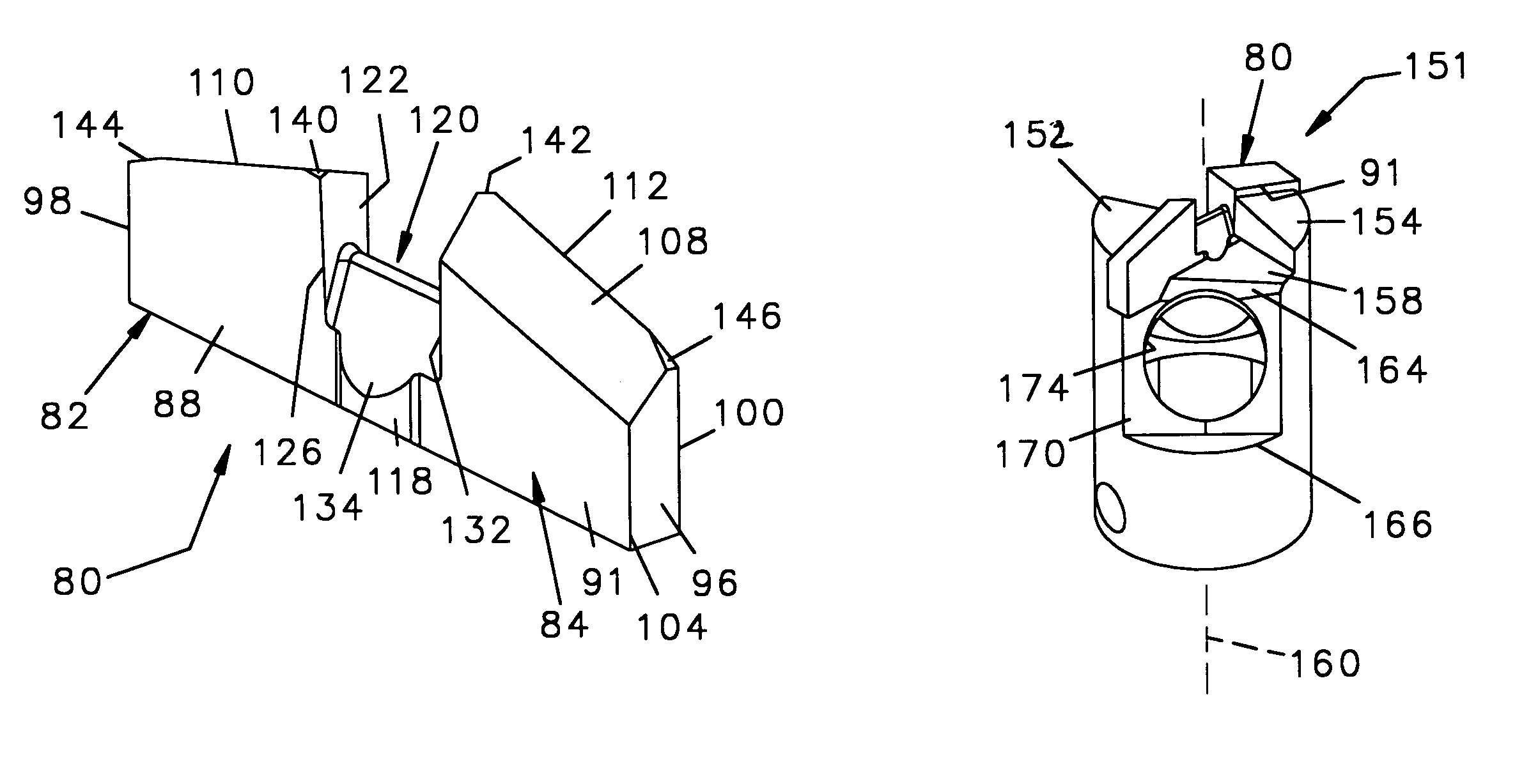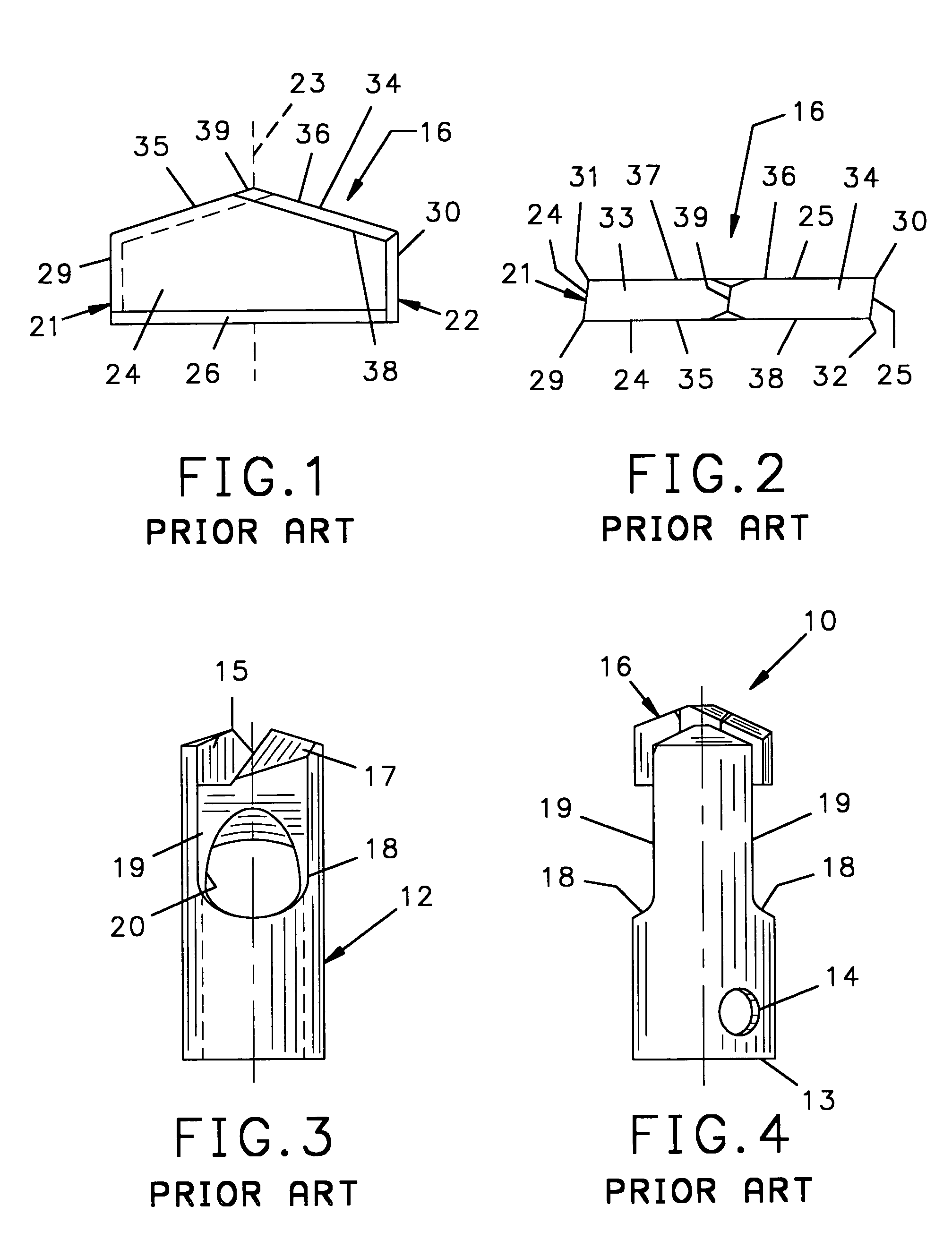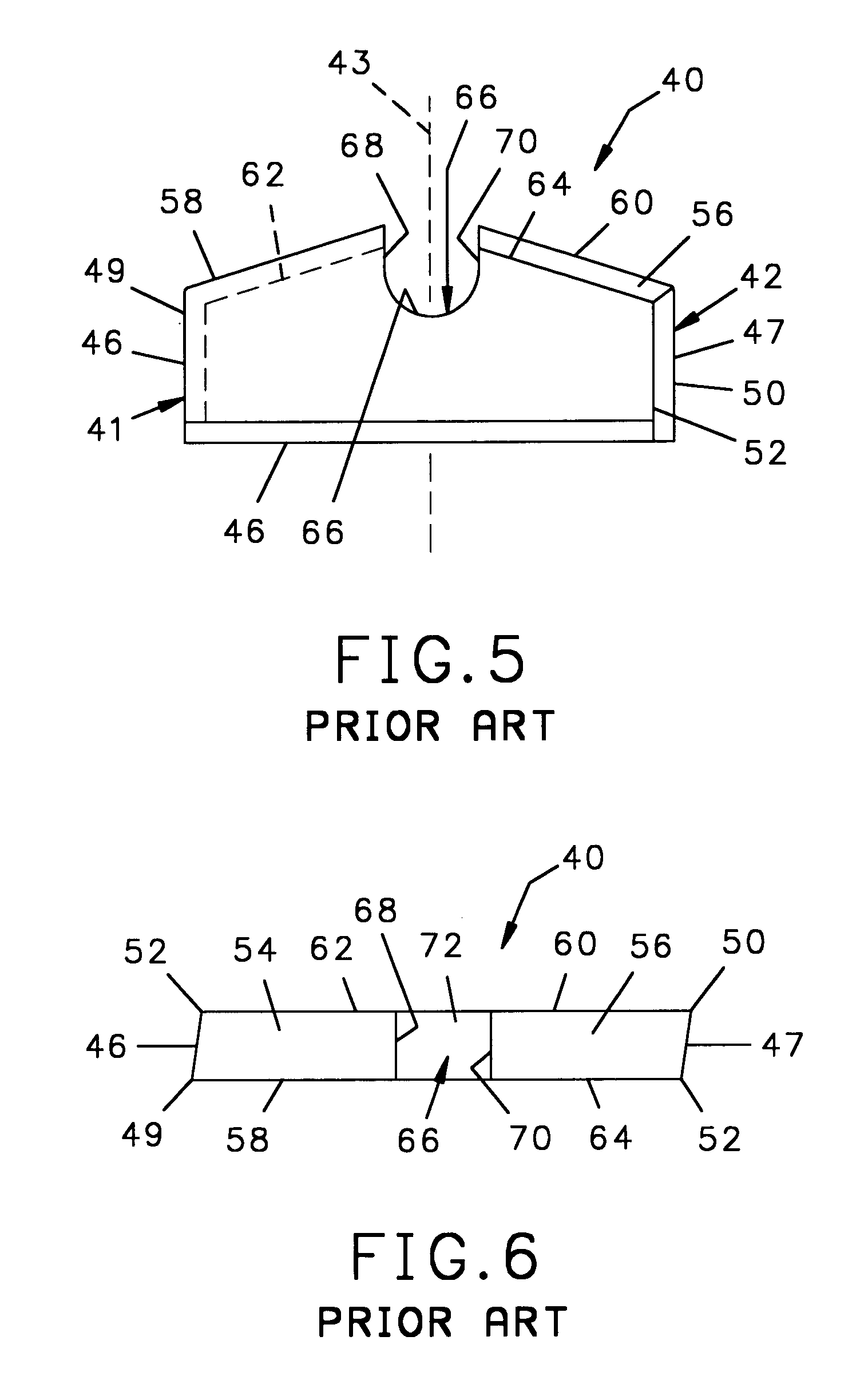Mine ceiling drill bit and blade
a drill bit and ceiling technology, applied in the field of ceiling drill bits and blades, can solve the problems of failure of the blade, failure of the drill bit used to drill holes, and inability to reduce the force which the drilling machine applies to such drill bits, so as to prevent the deterioration of the cutting surface, reduce the thrust force, and reduce the resistance
- Summary
- Abstract
- Description
- Claims
- Application Information
AI Technical Summary
Benefits of technology
Problems solved by technology
Method used
Image
Examples
second embodiment
[0053]Referring to FIGS. 15 through 17 in which the invention is depicted, a drill bit 200 has a blade 202 attached to the bit body 150 previously described above. Blade 202 has cutting sides 204, 206, an axis 208, leading faces 210, 212 trailing faces 214, 216, and cutting surfaces 218, 220. Blade 202 also has inner relief panels 222, 224 and outer relief panels 226, 228.
[0054]Blade 202 differs from blade 80 in that blade 202 has a curved bridge 229 extending between the opposing parallel inner side walls 230, 232 creating a saddle configuration with sloping panels 234, 236 respectively to form a curved cutting edge 238. The curved cutting edge 238 of blade 202 breaks up large particles of hard material loosened from the center of the bore as the blade 202 continues its cut. By breaking up the large particles formed in the center of the bore, the particles are allowed to move across the angled portions 162, 164 of the bit body 150 to the apertures 174, 176 and be drawn by the vacuu...
third embodiment
[0055]a blade 240 in accordance with the invention, depicted in FIGS. 17–19, is similar to blade 80 previously described. Most of the elements of blade 240 are identical to the corresponding elements of the blade 80 and where such identical correspondence exists the elements of blade 240 are not described in this text and are identified on the drawings with indicia numbers identical to the corresponding indicia numbers of the blade 80 except they are primed.
[0056]The shape of both blades 80 and 240 are formed by forming tungsten carbide particles with a wax binder in a die and compressing them with a punch. The formed part is then cintered. The bridge 242 of the blade 240 is rounded at the center 244 as shown.
fourth embodiment
[0057]a blade 250, depicted in FIGS. 20–22, is similar to blade 202 previously described and the elements of blade 250 which are identical to those of blade 202 are not described herein but bear indicia numbers on the drawings identical to those of blade 202 except they are primed. In this embodiment the bridge 252 of the blade 250 has again been rounded at its center 254.
PUM
| Property | Measurement | Unit |
|---|---|---|
| axis of rotation | aaaaa | aaaaa |
| saddle shape | aaaaa | aaaaa |
| stress relief | aaaaa | aaaaa |
Abstract
Description
Claims
Application Information
 Login to View More
Login to View More - R&D
- Intellectual Property
- Life Sciences
- Materials
- Tech Scout
- Unparalleled Data Quality
- Higher Quality Content
- 60% Fewer Hallucinations
Browse by: Latest US Patents, China's latest patents, Technical Efficacy Thesaurus, Application Domain, Technology Topic, Popular Technical Reports.
© 2025 PatSnap. All rights reserved.Legal|Privacy policy|Modern Slavery Act Transparency Statement|Sitemap|About US| Contact US: help@patsnap.com



